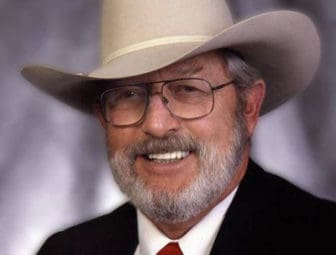COMMENTARY: There have been many back-and-forth comments in the newspaper concerning whether the use of the Antiquities Act to declare large parcels of land was an abuse of the Act. I agree that the Antiquities Act gives the president of the United States the authority to declare national monuments on federally owned or controlled land. I am not so sure on the ocean set aside for national monuments, but that is for another day.

Courtesy photo
Jerry G. Schickedanz
The executive order signed by President Trump directed Secretary of Interior Ryan Zinke to review all national monuments over 100,000 acres set aside by presidential proclamation since 1996. In New Mexico this includes the Organ Mountains-Desert Peaks National Monument of 496,300 acres and the Rio Grande Del Norte National Monument of 242,555 acres.
He further directed the secretary to consider the requirements and original objectives of the Act, including the Act’s requirement that the reservations of land “…be confined to the smallest area compatible with the proper care and management of the objects to be protected,” and “whether designated lands are appropriately classified under the Act as historic landmarks, historic and prehistoric structures, [or] other objects of historic or scientific interest.” He also directed the secretary to consider “the effects of a designation on the use and enjoyment of non-federal lands within or beyond the monument boundaries.”
There are other items to look at, but I will limit my comments to these three items.
During the first two years of the Antiquities Act, President Theodore Roosevelt designated two national monuments in New Mexico: El Morro, at 160 acres, and Gila Cliff Dwellings, also 160 acres. The objects to be protected were identified, then the smallest area needed for proper care and management of the objects. Attention was given to the requirements of the Act.
President Barack Obama named two large areas in New Mexico, the Organ Mountains-Desert Peaks of 496,300 acres and Rio Grande Del Norte of 242,555 acres. It appears that these national monuments started with a large boundary and then looked for objects to be protected. I am confident that is the case in the Organ Mountain-Desert Peaks, as the boundary closely follows several attempts at legislative protection for the area that were rejected by Congress.
Seems to me that the cart is before the horse in this particular proclamation.
The second question that needs answered by the review are the objects properly identified in the proclamation. Objects such as the El Camino Real de Tierra Adentro are named objects, but are not even in the monument. Historical ranch buildings and Butterfield Stage Stops are on private land or state trust lands and are not subject to the Act or the land surrounding them. Providence Cone, named as containing rock art, is on state trust land and, again, not subject to provisions of the Act. I am sure there are more instances when reviewed.
The third question of use and enjoyment of non-federal lands within the monument and beyond certainly needs to be addressed. The 496,300-acre monument is federal-controlled land, but the boundary includes 64,360 acres of state trust land (which provides income for schools) and 14,980 acres of private land that will certainly be impacted by the monument designation.
It is clear to me that Secretary Zinke, in his review of the Organ Mountains-Desert Peaks National Monument, will find many abuses of the authority given by the Antiquities Act. I welcome his review of the smallest area needed for protection, properly identified objects and the imbedded state and private land problems.
Thank you President Trump for directing a review of the abuse of the Antiquities Act.
Jerry G. Schickedanz is a distinguished chair of the Linebery Natural Resource Policy Center at New Mexico State University.